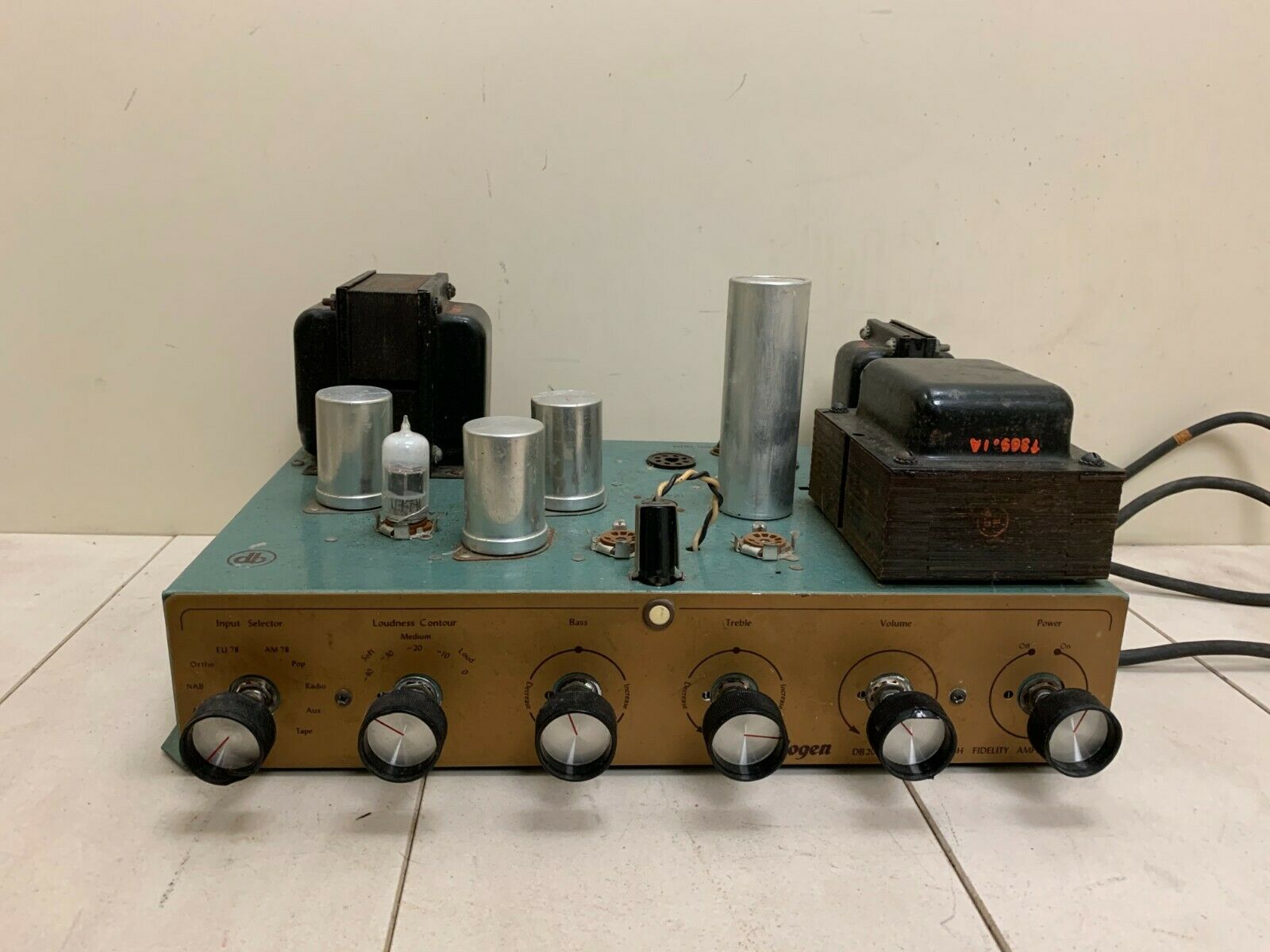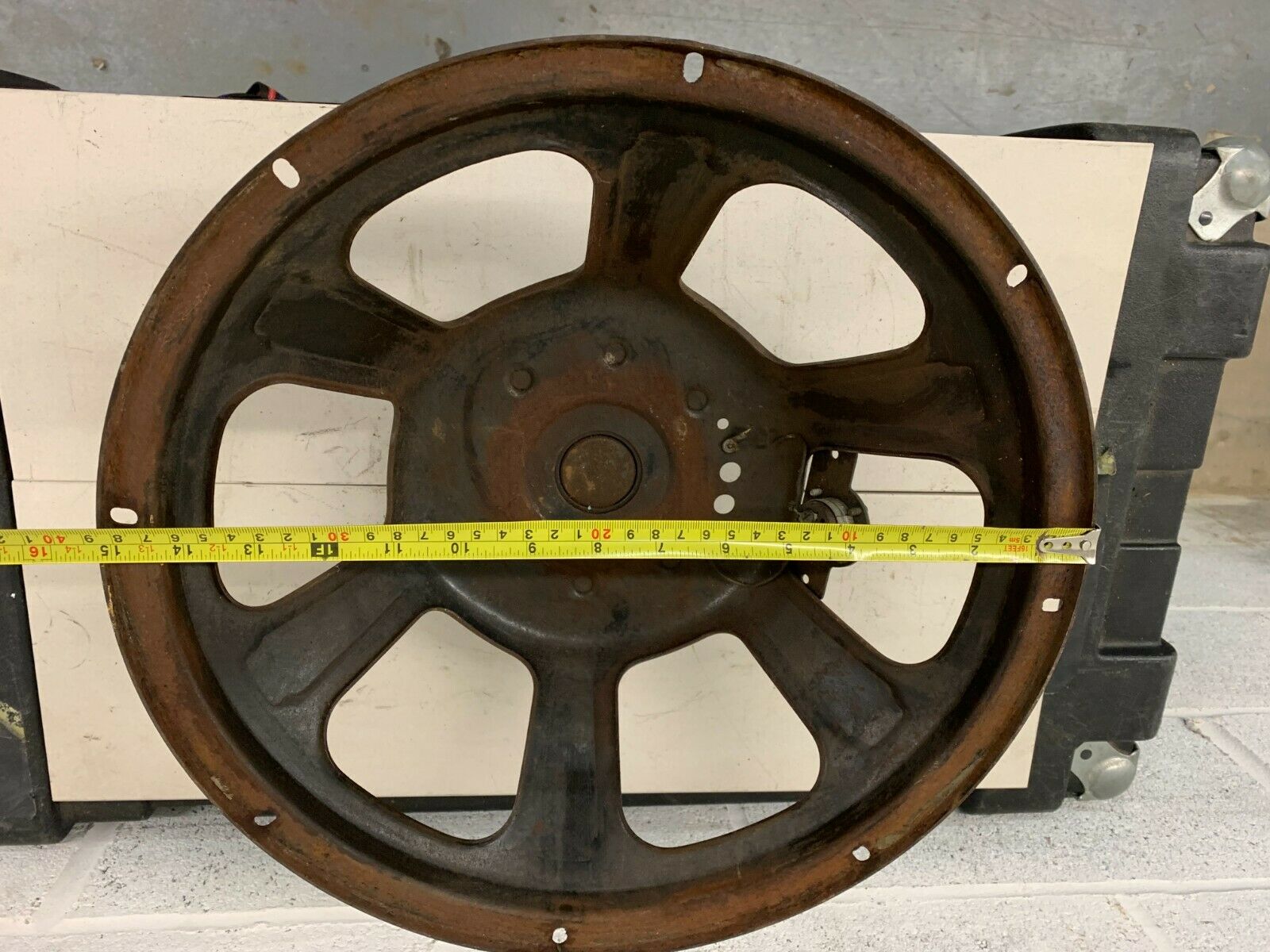-40%
IBM Vacuum Tube Audio Amplifier,1970s single channel amp from military aircraft
$ 63.35
- Description
- Size Guide
Description
This listing is for purchase of multiple amps - with offers.This compact audio amplifier can be utilized in pre-amp and low power amp applications. It is a single channel 4 tube amplifier, with two 5840 subminiature pentodes used in resistance coupled amplifier circuits, first one receiving signal from a shielded filter (separate ground pins provided), down through to second pentode amplifier and to the first audio transformer (1:2 ratio). From there signal goes to two 5902 beam power pentodes which are coupled with second audio output transformer (1:2.25 ratio).
Each vacuum tube is well shielded from interference by silver coated copper clasps, soldered to grounded copper heatsinks. (this ground is separate from circuit ground and separate from input signal ground). Whole amplifier circuit is built in a circular copper container and vacuum sealed. Vacuum tubes have been replaced and are new as of 1970s, providing with thousands of hours of service life. Whole circuit inside each of the containers is in exceptionally great condition due to vacuum seal of the whole device and fresh vacuum tubes.
These amplifiers were made by the IBM and used on a military aircraft. They are very mechanically robust, despite containing vacuum tubes, partly due to construction of the vacuum tube radiators that are build in a shape of a ring with spring loops. On photographs you will see the construction of the amplifier with copper container removed, as well as overall view with a container.
Note that the amplifier does not include feeding circuit. You need to supply 6.3 V and 200V. You will need minimally one component added externally which would control voltage supply to the first 5840 pentode. I chose mine to be 1M potentiometer, you could experiment with smaller values if you prefer, but, for example, when I was using 10K – it was warming up.
Electronic schematic of the amp is the second image. Letters on schematic correspond to pinout on the socket and description below.
Here is the pinout:
A – Ground 1, this includes vacuum container and vacuum tubes shielding.
B – Audio out
C – Audio out
D – 200V positive
E – Center point of 1M potentiometer. Left pin of potentiometer is connected to V pin, right pin of potentiometer is connected to D pin.
F – not used
G – Input signal filter shielding, isolated from the rest of the circuit. In my application connected to pin A.
H – connect to the signal input, either this pin or pin K.
I – Input signal filter shielding, isolated from the rest of the circuit. In my application connected to pin A.
J – Input signal pin (via its own 1M wire wound resistor inside the shielded case)
K – connect to the signal input, either this pin or pin H.
L – Input signal pin (via its own 1M wire wound resistor inside the shielded case)
M - Input signal pin (via its own 1M wire wound resistor inside the shielded case)
N – Input signal pin (via its own 1M wire wound resistor inside the shielded case)
V – 200V Negative, also connected to pin A.
V’ – same as pin A (internally connected to the same point in circuit)
P – 6.3V
P’ – 6.3V
You can get this amplifier in different ways –original – sealed in vacuum container; without container with 20 pin connector; without container and without connector; I can include connector and container on the side if you want to have them just in case. Any way you want it – I will accommodate it. I was not able to find a mating connector to the one supplied on this amplifier. But you can connect to the pins using individual socket pins. Each pin is .7 mm in diameter, you will need 12 pins minimum to connect to this device. It is recommended to have incoming signal in a shielded wire, and 200V power also coming in shielded cable especially if it is coming from a switching circuit. Shield the switching circuits well if you are using them around this amplifier without the outside shell.




















